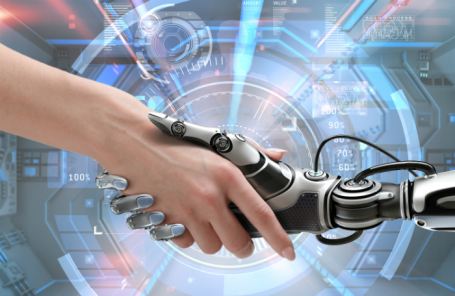The modern industrial revolution, referred to as the Fourth Industrial Revolution, is undergoing significant changes due to the rapid development of automation and robotics technologies. These innovations not only modernize production processes, but also fundamentally change the way work is organized, increase efficiency and reduce costs. Let's consider how exactly new technologies affect production processes, as well as what challenges and opportunities they bring.
1. Introduction to Automation and Robotization
Automation involves the use of various technologies to control production processes with minimal human intervention. This can be achieved through programmable logic controllers, control systems, and software. Robotization is a specific aspect of automation associated with the use of robots – mechanical devices that can perform tasks that require physical work.
2. Impact on production processes
2.1 Improving efficiency and productivity
One of the main reasons for the introduction of automation and robotics is the desire to increase productivity. Robots and automated systems work faster and more accurately than humans and can function without interruption, contributing to an increase in total production. For example, in the automotive industry, robots perform welding, painting and assembly operations with high precision, which significantly reduces the time to produce one unit of products.
2.2 Product Quality Improvement
Modern automated systems and robots can ensure higher product quality through the accuracy and repeatability of processes. For example, in the electronics industry, automated systems inspect components for defects using high-precision sensors and machine vision algorithms, minimizing the risk of defects and increasing the reliability of the finished product.
2.3 Cost reduction
While the initial investment in automation and robotization can be significant, the long-term benefits include reduced labor costs and reduced defect correction costs. In addition, automated systems can optimize the use of raw materials and energy, which also contributes to cost savings.
2.4 Flexibility and adaptability
Today's automation systems are becoming more flexible and adaptive. They are able to quickly adapt to new tasks and production conditions. For example, with programmable robotic systems, it is easy to modify the production line to produce different product models without a significant investment of time and money.
3. Examples of automation and robotization implementation
3.1 Industrial sector
One of the striking examples of the use of robotization is the production of cars. In the factories of automotive companies, robots are engaged in assembly, welding, painting and even quality inspection. These robots perform their work with high speed and accuracy, which allows for a significant increase in production and a reduction in scrap.

3.2 Food industry
In the food industry, automation helps to cope with high volumes of production and packaging of products. Robots are used to pack, sort and inspect the quality of products. For example, on food packaging lines, robots can quickly and accurately pack food into boxes, minimizing contact with them and reducing the risk of contamination.
3.3 Medical industry
In the medical industry, automation plays an important role in the production of medical devices and drugs. Robots help in the precise dosing of medications as well as in performing complex surgical operations by providing the surgeon with high-precision instruments and support.
4. Challenges and prospects
4.1 Impact on jobs
One of the most talked about aspects of automation and robotization is their impact on jobs. Replacing human labor with robots can lead to a reduction in the number of jobs, especially in routine and physically demanding tasks. At the same time, it opens up new opportunities for work in areas related to the design, maintenance and programming of automated systems.
4.2 Education and qualifications
To successfully adapt to the changes brought about by automation, it is necessary to invest in the education and skills development of the workforce. Specialists must learn new skills related to working with automated systems and robots in order to be competitive in the labor market.
4.3 Ethical and social aspects
Automation and robotization also raise ethical and social issues. Societal impacts need to be considered, including income impacts, social inequalities and impacts on workers' health and safety.
Conclusion
Automation and robotization are key factors shaping the future of production processes. They help to increase efficiency, improve product quality and reduce costs. At the same time, the introduction of new technologies is associated with challenges related to labor costs and the need to adapt the workforce. A successful transition to automated and robotic systems requires a comprehensive understanding of their advantages and disadvantages, as well as the development of strategies to minimize negative consequences. As technology continues to evolve, we can expect even more significant changes in production processes in the future that will shape the future of the industry.
